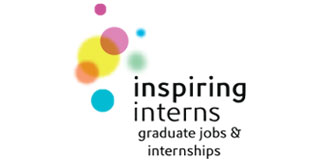
What Does Happiness At Work Mean?
- September 8, 2020
- Marketing Team
We do not consider happiness to be a momentary emotional state like amusement or pleasure, and we don’t think you can arrive at happiness by stringing together a stream of positive experiences. Rather, we define happiness as an overarching quality of life that is rich in a variety of emotions, even including episodes of anger, sadness, and stress. While it’s not ideal for these more challenging emotions to last too long or have too much influence on how we think, the situations in which they occur are often the ones that fuel our deeper sense of purpose, and draw us into meaningful contact with others.
There’s no single, simple solution to finding happiness at work, however, four key pillars have been identified which can do just that. Purpose, Engagement, Resilience, and Kindness. Just remember the acronym PERK, as in to PERK up your happiness at work, or make happiness your company’s best PERK.
Studies report multiple ways to strengthen each pillar of PERK on personal, social, and structural levels at work—through individual exercises and activities, the development of key social skills, shifts in leadership style, initiatives, or changes to company policy.
Below, we summarise some of the highlights from science and industry behind each of the four pillars of PERK:
1. PURPOSE
Our purpose is a reflection of our core values, and we feel more purposeful at work when our everyday behaviours and decisions are aligned with those values. As individuals, bringing more passion and purpose to work can mean asserting ourselves in formulating and conducting our day-to-day tasks, connecting what we do to what we believe in and care about, rather than passively embracing the status quo. For example, if you value equality and diversity, you can make a point of collaborating with people of different backgrounds from yours.
2. ENGAGEMENT
Do you generally enjoy your work? Are you part of the decisions about what, when, and how you do things at work? How often do you feel curious or deeply immersed and lose track of time while working? Do you feel like you can be effective and get things done?
According to recent reports, a majority of working people around the world say no to questions like these, indicating that engagement at work is troublingly low.
There are two ways to increase engagement at work. First, fold in some playfulness, creativity, and levity. Second, give people more ownership over their day-to-day schedule, tasks, and professional development, and build in opportunities to learn and grow. Participating in multi-day on-boarding events that include fun social activities and “job crafting”, an exercise in reflecting on your personal strengths and the collaborative dimensions of your job, is a great way in engaging with your fellow colleagues.
3. RESILIENCE
The ability to handle, adapt to, and productively learn from setbacks, failures, and disappointments is critical to overall happiness at work. Resilience doesn’t mean trying to prevent difficulties, stifle stress, or avoid confrontation; it means being able to manage challenges at work with authenticity and grace.
To strengthen your own resilience at work, perhaps the most promising technique is to practice mindfulness. Mindfulness can be a starting point for revising our learned habits of self-criticising or blaming others, or getting preoccupied about past or future upsets, that make it hard to manage difficult moments at work. Companies can weave mindfulness into their overall climate, with online breathing tutorial. Another way to bolster resilience at work is to be authentic—that is, bring your whole and best self to work. Being true to ourselves at work eliminates the stress of ‘surface acting’ or pretending to feel emotions you don’t feel.
Resilience at work is also tied to successfully detaching from work. That means taking time away to recover and pursue restorative and non-work-related wellness. For some that may be difficult at the moment if they are still working from home.
4. KINDNESS
Finally, we’re happier at work when we tap into our innate tendency towards kindness, orienting our thoughts, feelings, and actions towards care for others and genuinely supportive social bonds. Being kind at work involves treating others with dignity and respect, extending empathy and compassion, practicing gratitude, and constructively managing conflicts.
Kindness at work begins with civility. Being civil means building trust; sharing resources, feedback, and and being a good listener. For leaders, civility skills are critical to avoiding the corruptive influence of gaining power. A next step to kindness at work is practicing “prosocial” states like empathy, compassion, and gratitude. Empathy is the basis for understanding other people, and guides cooperative choices and effective teamwork. Not only do compassion and gratitude increase kindness, they also help people succeed at their goals at work.
What happens when workplace relationships run into trouble? Research shows that apologising, often considered a sign of weakness, is good for trust and, in turn, happiness at work. Apologies inspire greater respect and commitment in the people around you, and make organisations better at rebounding from setbacks.
Today, we still face surprisingly high levels of boredom, disengagement, chronic stress over these uncertain times and even cynicism. Millennials agree that happiness at work, like happiness in life, is a basic human aspiration and, thus, the most attractive ‘perk’ a workplace can offer. And research shows that happiness at work is essential to organisational success, entirely possible to foster, and well worth the investment and effort.







